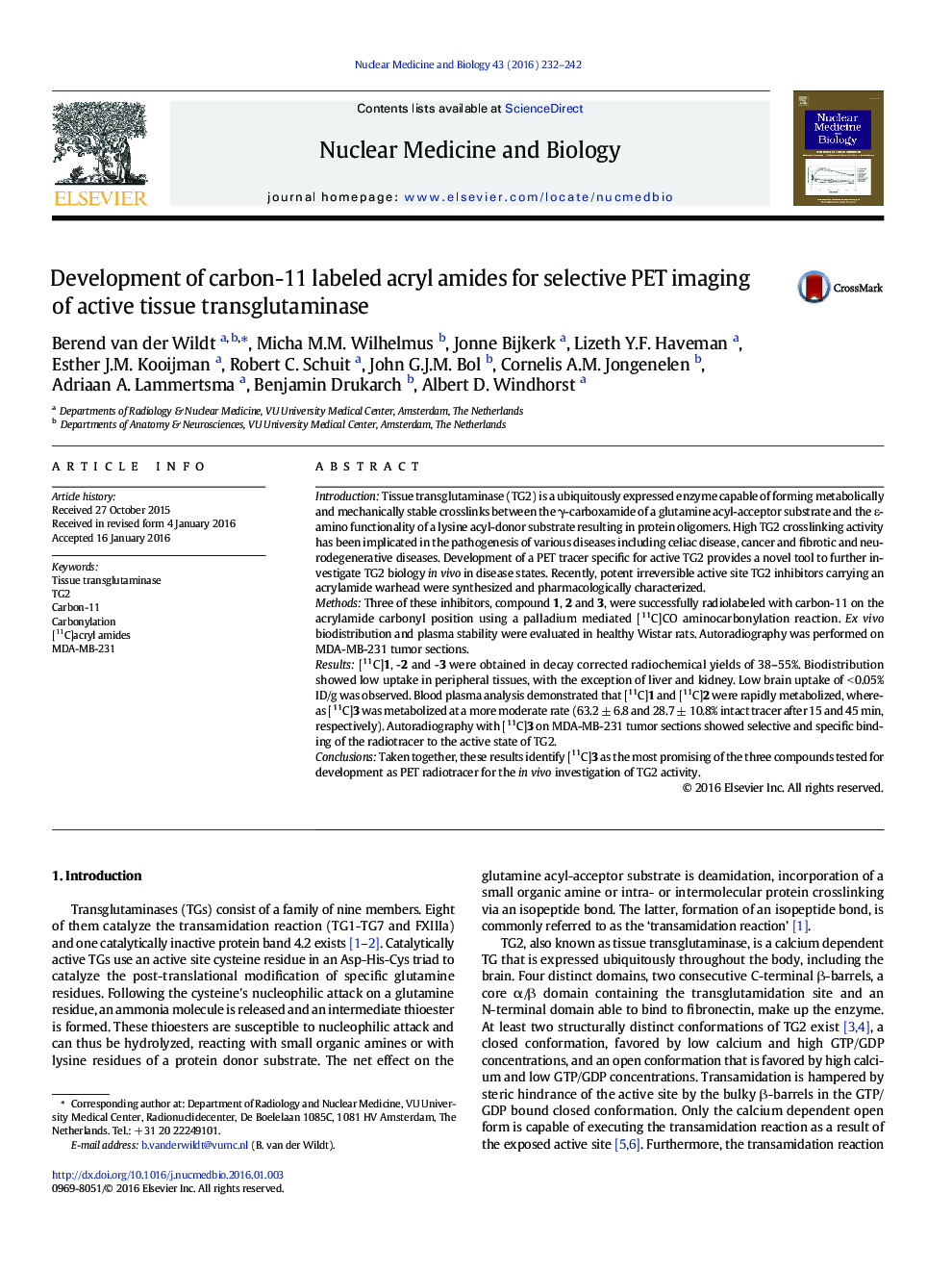| کد مقاله | کد نشریه | سال انتشار | مقاله انگلیسی | نسخه تمام متن |
|---|---|---|---|---|
| 2153313 | 1090168 | 2016 | 11 صفحه PDF | دانلود رایگان |

IntroductionTissue transglutaminase (TG2) is a ubiquitously expressed enzyme capable of forming metabolically and mechanically stable crosslinks between the γ-carboxamide of a glutamine acyl-acceptor substrate and the ε-amino functionality of a lysine acyl-donor substrate resulting in protein oligomers. High TG2 crosslinking activity has been implicated in the pathogenesis of various diseases including celiac disease, cancer and fibrotic and neurodegenerative diseases. Development of a PET tracer specific for active TG2 provides a novel tool to further investigate TG2 biology in vivo in disease states. Recently, potent irreversible active site TG2 inhibitors carrying an acrylamide warhead were synthesized and pharmacologically characterized.MethodsThree of these inhibitors, compound 1, 2 and 3, were successfully radiolabeled with carbon-11 on the acrylamide carbonyl position using a palladium mediated [11C]CO aminocarbonylation reaction. Ex vivo biodistribution and plasma stability were evaluated in healthy Wistar rats. Autoradiography was performed on MDA-MB-231 tumor sections.Results[11C]1, -2 and -3 were obtained in decay corrected radiochemical yields of 38–55%. Biodistribution showed low uptake in peripheral tissues, with the exception of liver and kidney. Low brain uptake of < 0.05% ID/g was observed. Blood plasma analysis demonstrated that [11C]1 and [11C]2 were rapidly metabolized, whereas [11C]3 was metabolized at a more moderate rate (63.2 ± 6.8 and 28.7 ± 10.8% intact tracer after 15 and 45 min, respectively). Autoradiography with [11C]3 on MDA-MB-231 tumor sections showed selective and specific binding of the radiotracer to the active state of TG2.ConclusionsTaken together, these results identify [11C]3 as the most promising of the three compounds tested for development as PET radiotracer for the in vivo investigation of TG2 activity.
Journal: Nuclear Medicine and Biology - Volume 43, Issue 4, April 2016, Pages 232–242